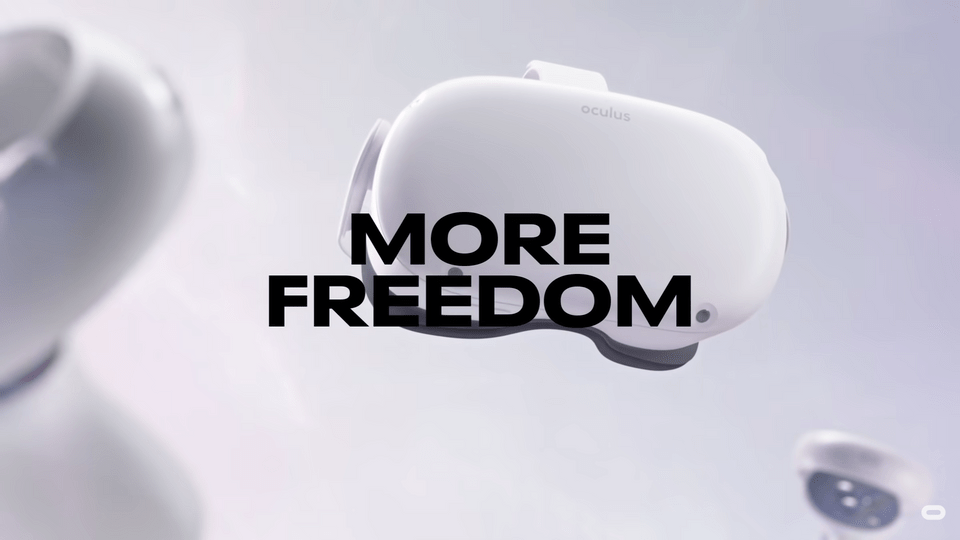Movement and tech-channelled embodiment
— Context & Theory, Body, Movement, Control — 3 min read
Last post we outlined our plans for 2021 — we'll be exploring movement in VR. We gave a brief summary of the background of this next project phase, but here I'd like to elaborate on some of the core contextual thoughts a bit further. In order to explain, that is, why we're interested in relation between our digital bodies and the game environments they live in.
Movement: an intimate form of our self-expression and self-exploration
Bodily movement is the expression of ourselves onto the world. In the words of the philosopher Stephen Mulhall, it brings "reflexive clarity through the articulate embodiment of feeling”.1 Through the mediation of the body we are able to express our inner selves, to obtain our goals and desires, and understand and explore our identity.
It comes as little surprise then, that embodiment is a widely desired characteristic of virtual experiences and video games. Indeed, movement-based input technologies, like those used in the MS Kinect or Wii and VR controllers, are making real-time, player-driven, in-game movement possible. In virtual worlds, our gameplay is rewarded by an authentic, personalised experience — tailor-made to the unique choices of the player. As regular participants in for example improv, fitness or pole dancing events in VR Chat rooms report, virtual space offers an environment in which we can explore safely these expressions of our inner selves. Gaming and VR expert Gabriel Moss writes for VR Fitness Insider:
“By and far, VR is rapidly becoming a way for people to get out of their comfort zones and try new athletic or social activities without needing to completely leave their “comfort zones” at all. These people really seem to be … gaining confidence that they then carry with them when they leave VR and go into the real world.”2
Tech-channelled embodiment: an opening for the commodification of our bodies
In our previous work we questioned the gaming standard of exploitation as the go-to game mechanic that drives most gameplay. To Mario for example, destruction is the virtuous path to saving the princess. Thus, exploitation of the virtual surroundings has been guaranteed only to the player, but not of the player.
We are witnessing this changing with the increase in movement-based input technologies in search of more immersive experiences and higher fidelity embodiment. More tech-channelled embodiment in video games and virtual environments exposes our bodies to commodification down to our real-time physical movements. In-between these virtual and IRL realities, players’ moving, physical bodies are now becoming objects tracked; made visible for those watching to exploit.
The latest privacy policy binding all users of Oculus VR gear for example, entitles Facebook to collecting “[i]nformation about your environment, physical movements, and dimensions when you use an XR device.”3 This includes data about both, the physical environment you are in — ‘the play area you have defined’ 3 — and your movement within that space — ‘the real-time current position of headset and controllers’.4 Not to mention that all Oculus Quest users are expected to be logged into (their) Facebook accounts while using the gear.
To us this poses a challenge we would like to address: in what ways can we move through virtual space freely when bodily expression becomes commodified?

Still from the Oculus Quest 2 trailer, which advertises ‘More performance’, ‘More play’ and ‘More freedom’ ‘from $299’.
Beyond intent, to the movement you arrive there through
Addressing the central issue of the commodification of our movement, our research this year will engage with the topics of embodiment in virtual space — how we relate to our virtual bodies — and digital identities and privacy — how we navigate the complicated boundaries between public and private in digital space.
As such we take inspiration from our own and others’ previous works in these domains. With the event-based webgame Click Click Click for example, Moniker created a game out of players’ movements and actions in their browsers, treating even the most mundane of these as “achievements”. In a different tone, works like the Data Production Labour installations by Manuel Beltrán’s Institute of Human Obsolescence invite participants to do data production “shifts” for Big Tech companies. A body of works exists aiming to reveal and raise awareness about the exploitation of individuals’ invisible labour in virtual spaces.
With keyboard-and-mouse or smartphone interfaces, our bodies have stayed invisible to the machine. We expose our intention through the click of a mouse, but the hand grasping the mouse remains concealed — the device is indifferent to whether you clicked with your index finger, pinky or toe.
We see movement-based input technologies as a means of extending tracking from (“only”) our intended actions towards our intimate self-expression. This is a new form of intrusion into our subjecthood. For this reason, we find it relevant to address the potential spaces for this bodily exploitation, like VR.
- Mulhall, S. (1992). "Expression" in Cooper, D. E. (ed) A Companion to Aesthetics. Oxford: Blackwell. p. 145.↩
- Moss, G. (2018). ‘VRChat’s Full-Body Tracking Attracts Pole Dancers, Breakdancers and More’. VR Fitness Insider. Retrieved on 30 September from: https://www.vrfitnessinsider.com/vrchats-full-body-tracking-pole-dancers/.↩
- Oculus. (2019, Dec 27). Oculus Privacy Policy. Facebook Ireland Limited. Retrieved on 30 September 2020 from: https://www.oculus.com/legal/privacy-policy/.↩
- Oculus. (n.d.) General Privacy. Facebook Ireland Limited. Retrieved on 30 September 2020 from: https://support.oculus.com/947039345464468/.↩